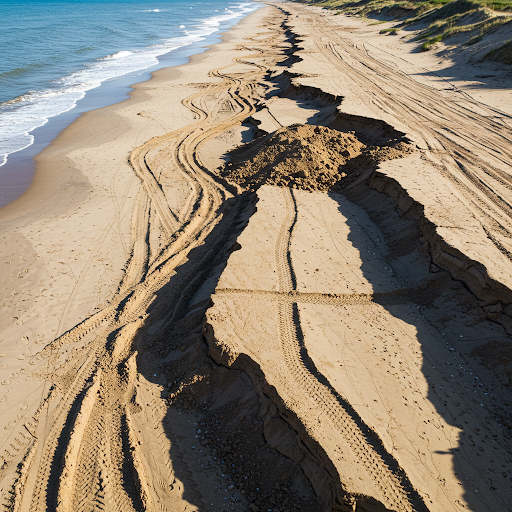The Silent Crisis How Sand Mining is Fueling Environmental Collapse and Global Crime. tik4tat.com

The Silent Crisis: How Sand Mining is Fueling Environmental Collapse and Global Crime. Mainstream Media won’t report, but we will.
While Gen Z and Millennials rally around climate strikes and sustainable fashion, a critical environmental and criminal issue remains conspicuously absent from mainstream media: *the global sand crisis*. Sand, the second-most consumed natural resource after water, is being extracted at catastrophic rates, driving ecological destruction, violent crime, and public health threats—all under the radar.
1. The Scale of the Problem
Sand isn’t just for beaches. It’s a key ingredient in concrete, glass, and even smartphone screens. The UN estimates **50 billion tons** of sand are mined annually—enough to build a wall 27 meters high around Earth’s equator. Demand has tripled in 20 years, fueled by urbanization and tech growth. Yet, desert sand (too smooth for construction) is useless, so miners target rivers, coastlines, and lakes, depleting ecosystems faster than they can recover.
2. Environmental Apocalypse
– River Ecosystems Collapse: In Cambodia, the Mekong River’s sand extraction has caused riverbanks to collapse, displacing communities and destroying fish habitats—critical for food security.
– Vanishing Islands: Indonesia has already lost *25 islands** to sand mining, primarily to supply Singapore’s land reclamation projects.
– Coastal Erosion: Beaches in Morocco and Vietnam are disappearing, stripping natural barriers against storms and rising seas.
3. The “Sand Mafia” Epidemic
Illegal sand mining is a $200+ billion global industry, controlled by organized crime networks. In India, “sand mafias” murder activists, journalists, and officials who oppose them. Over 400 people have been killed in sand-related violence in the past decade, including reporter Jagendra Singh, burned alive in 2015 after exposing political ties to illegal mining. Similar syndicates operate in Kenya, Mexico, and Italy, often protected by corrupt officials.
4. Hidden Health Impacts
– Toxic Dust: Mining releases silica particles into the air, linked to respiratory diseases like silicosis. In Punjab, India, villages near mines report skyrocketing asthma rates.
– Water Contamination: Sediment runoff clogs waterways, increasing flood risks and poisoning drinking water with heavy metals.
5. Why Isn’t This Making Headlines?
– Corporate Interests: Construction and tech industries (worth trillions) depend on cheap sand. Lobbyists suppress regulation.
– Global Blind Spot: Sand isn’t classified as a “strategic resource” by most governments, so tracking and oversight are minimal.
– Underreported Crime: Local journalists risk their lives to report on sand mafias, while international media prioritizes flashier crises.
What Can You Do?
– Demand Transparency: Pressure governments to enforce the UN’s 2023 sand sustainability guidelines.
– Support Alternatives: Advocate for recycled construction materials (e.g., crushed concrete) and sand-free tech innovations (like liquid glass).
– Amplify Voices: Share documentaries like *Sand Wars* or support NGOs like **Terra Matters** fighting illegal mining.
The Bottom Line
Sand scarcity isn’t just an environmental issue—it’s a ticking time bomb for global stability. By raising awareness, Gen Z and Millennials can force this crisis into the spotlight, holding corporations and governments accountable before the last grain slips away.
*Stay informed. Stay loud. The world is literally built on sand—and it’s running out.* 🌍✊
—
Sources: UNEP Global Sand Observatory, *Sand Wars* (2013 documentary), Environmental Justice Foundation reports.
Further Reading: The World in a Grain* by Vince Beiser (2018).
tik4tat research – We report what others won’t
Your Life-Your Future


